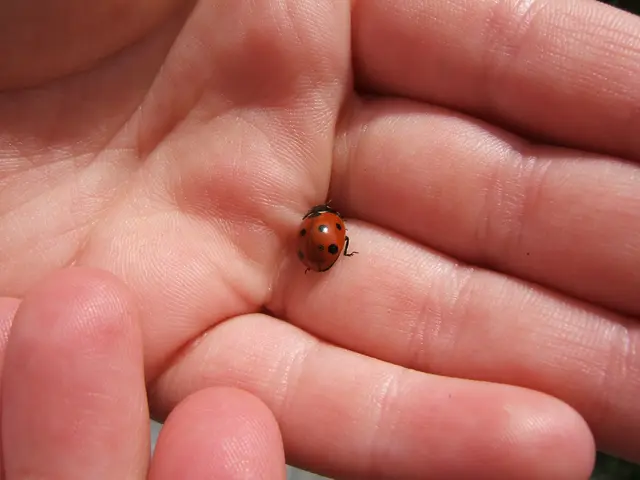Ticks on the Rise post Mild Winter? Here's the Lowdown on Springtime Pests!
Mild winters might potentialize an increase in tick populations. - Increase in tick population potential after a relatively mild winter season.
Hey there! Tick season is in full swing, and it looks like the mild winter may have played a part in it. According to experts like Gerhard Dobler from the Institute of Microbiology of the German Armed Forces in Munich, the high numbers of ticks in Bavaria this year can be attributed to the mild winter, which allowed many ticks to survive and become active in the spring.
Dobler, along with his team, has been collecting ticks in risk areas in eastern Bavaria since ages to examine them for FSME viruses and other pathogens. And, you guessed it - they've seen record numbers of the common wood tick since March! The wood tick is the most common European tick species, found in various regions like the Allgäu, Baden-Württemberg, and Saxony.
Tick-infested festivals have been reported, too. Festival-goers at the Rock im Park music festival over the Whitsun weekend in Nuremberg were met with creepy crawlies, as 145 people sought help from the medical service due to tick bites - that's twice as many as last year!
However, it's essential to remember that tick activity depends on numerous local factors such as temperature, humidity, fauna, and flora, so it's not possible to make a general statement for the whole of Bavaria. The Bavarian Health and Food Safety Authority (LGL) warns that there are no precise investigations, and thus, no reliable data to show whether there are more ticks this year.
So, what can these ticks bring? Well, the most common diseases they can transmit are Lyme disease and summer meningoencephalitis (FSME). Nearly the entire Free State of Bavaria is now considered an FSME risk area, so it's recommended to get vaccinated. Keep your eyes peeled; the numbers of Lyme disease infections have increased this year, with nearly 820 cases compared to around 670 last year. The number of FSME infections has decreased in the same period from 50 to around 30.
Climate change is also playing a part, with other tick species arriving in Germany. Ticks to watch out for include the brown tick (which can transmit diseases such as tularemia and spotted fever) and the Hyalomma tick (known to transmit Crimean-Congo hemorrhagic fever, a viral infection that can be fatal). Experts are closely monitoring the possible spread of Hyalomma ticks, but the virus has not yet been detected in any Hyalomma ticks found in Germany.
Now, here's a trying situation - the brown dog tick! This little pest often travels home with pets from holidays in the Mediterranean. These ticks only reproduce in protected spaces such as dog kennels or the homes of their owners. But don't stress; they're not exactly spreading - but they can be spread from one dog to another.
So, how do you keep yourself safe during the fabulous season of ticks? Stick to the park, keep your furry friends safe, and don't forget to check yourself (or your pets) when you return home from a day out in nature. Happy spring, folks! Stay safe out there!
Related Topics:- Ticks- Bavaria- Gerhard Dobler- TBE- Rock im Park- Munich- Germany- Spring- Bundeswehr- Eastern Bavaria- Allgäu- Baden-Württemberg- Music festival- Nuremberg- BRK
- The Commission is proposing to extend the period of validity of the health and wellness programme to cover the prevention and treatment of diseases transmitted by ticks, such as Lyme disease and summer meningoencephalitis (FSME), which are prevalent in areas like Bavaria and Eastern Bavaria.
- In addition to Lyme disease and FSME, the programme might also encompass chronic diseases associated with ticks, like chronic respiratory conditions that could be exacerbated by tick-borne pathogens.
- As science progresses, the programme might also focus on skin conditions related to tick bites, such as skin irritations or allergic reactions, which can be symptomatic of tick exposure.
- Additionally, the programme could address the mental health implications of living in an environment with increased tick populations and the associated risks of tick-borne diseases.
- With the arrival of other tick species like the brown tick and the Hyalomma tick, the programme might also explore the implications of these species on areas of medicine-conditions, such as the transmission of tularemia and Crimean-Congo hemorrhagic fever.
- To promote fitness and exercise, the programme could incorporate education on the importance of self-checks and preventive measures when engaging in outdoor activities in tick-prone environments, such as parks and forests, to ensure eye-health and overall wellness.








